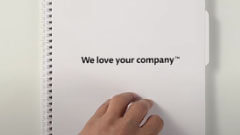Let's Talk
We would love to hear from you. Want to know more about our services or have any questions? Say Hi!
Cause Marketing, Is Your Brand A Part of It?

‘Giving makes us far happier than receiving’ is the finding of a research conducted on the science of generosity by John Haltiwanger.
In terms of business activities, the philosophy may come across as impractical, because the very objective of a business is to make profit, right?
Wrong. This myth is now being demolished by ‘Cause Marketing’ or Cause-Related Marketing’ that attempts to restore to nature portions of what a business takes away from it.
The idea was first put forth by Philip Kotler in his seminal work, Marketing 3.0. Kotler proposed “solutions to make the globalized world a better place” through Cause Marketing.
A recent Global Cause Evaluation Survey found that 55% consumers don’t like engaging with brands they perceive follow imprudent business practices. One of their interesting finding was that 76% respondents believe that a company can earn profits, even while supporting a good cause. The survey, reported by Monaem Ben Lellahom in Cause-Related Marketing: A Win-Win for Brands, Charities and The Consumer appeared in the Entrepreneur magazine.
Take for instance the Loop movement. In January this year Davos-based TerraCycle, a waste management company released a new recycling model called the Loop, reported Esha Chhabra in Why Global Brands Are Backing This New Way to Recycle in Forbes. For starters, a few top brands such as The Body Shop, Nestle, Unilever, PepsiCo, P&G have adopted the Loop model to recycle their packaging material.
Alan Jope, CEO-Unilever declares, “We want to put an end to the ‘take-make-dispose’ culture of consumption and design products that can be re-used.
“It took quite a bit of effort getting all the founding partners on board, namely PG, Unilever, Nestle, Mars and PepsiCo as the model entails major investments of money, time and other resources,” Tom Szaky, CEO of TerraCycle told media persons.
Today, even small and medium businesses are getting drawn to the cause. Meanwhile, other biggies are doing other things to support cause marketing.
Apple – Return an old Apple device, and if it can be refurbished, you will receive an Apple Store Gift Card, else, Apple engineers will think of other ways of recycling the used product. Also, Apple dismantles around 200 iPhones in an hour for use of their components in new sets.
Lush – Return five black packaging pots to any Lush store and you will receive a free face mask. The pots are recycled in new packaging.
Levi’s – Give away your old clothes and shoes at a store and collect a 10% discount coupon for fresh purchases.
H&M and ZARA – Any branded clothes that you are not using – turn that into the H&M store to claim a 10% discount coupon for new purchases.
Adidas: The shoemaker has set a precedent by pledging to use only recycled polyester for its clothing and shoes by 2024.
Experts however recommend that brands choose a campaign that resonates with their business activity. Don’t do a KFC, they warn. The chicken retailer one organised a fundraiser in which it sold chicken buckets to raise money for breast cancer.
As can be expected, the response to that campaign was mixed. Nearly 56% readers of Washington Post felt the activity was “misguided” reported Sara Davis, in Forbes, Is A Social Cause A Necessity for A Brand?.
A smart option would be to weave it into your web design portfolio and make it a ‘part’ of the business structure. Citing the same, a more genuine activity was recently unveiled by furniture brand Pepperfry. As you go to their check out page, you have the option to contribute Rs 30 to a tree plantation drive run by an organisation called Grow Tree. This kind of a recycling effort makes sense for a furniture brand. Appears like the “cause and effect” endorsement is here to stay.


